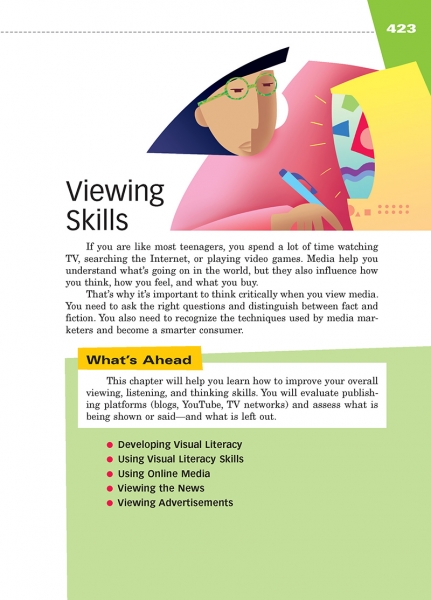Page 423 from

Start-Up Activity
Project on the screen a recent news story. Ask students what they notice about the article. They will probably talk about the image, the caption, the headline, any pull quotes, and so on. Have them evaluate each of these pieces of information to tell whether they seem fair and balanced.
Then ask students to widen their focus. Likely, the article will be surrounded by ads of all sorts (and sometimes interrupted by ads and pop-ups). What do students notice about these ads? Are they click-bait (irresistible images or headlines meant to get readers to click)? Ask why someone would post these images and words around an article.
Help students understand that all of the visual media that bombard them daily are constructed to get their attention and convince them of something. Students must therefore be very thoughtful in their viewing habits, recognizing solid information from fake news and reasonable images from distorted ones. This chapter will help.
Think About It
“Advertising is the art of convincing people to spend money they don't have for something they don't need.”
—Will Rogers

